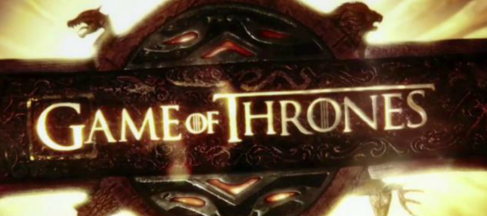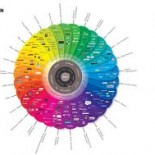Business Model: Game of Thrones
BY: Sofia Zemame, Ghezal Arian, Ellens Hensbergen & Veronica Åkerblad (Team 7)

Game of Thrones is HBO’s top fantasy series that discusses the power struggles and secret liaisons of dynastic families that strive for control of a mythical kingdom. Game of Thrones is a huge success in the United States, and one of the main reasons is the excellent transmedia campaign that was created to promote the series. This assignment will explain to you what this campaign entails, discuss the business model that was used for this campaign and provide you with a critical perspective on it.
Game of Thrones’ transmedia campaign was the result of a collaboration between HBO and marketing agency Campfire, and its goal was to excite the already existing fan-base so they could spread the word to audiences that weren’t familiar with the show (Rose, 2012). In order to do this, Campfire decided to move the emphasis from storytelling to world-building: they created a multi-sensory experience that incorporated the five senses: sight, smell, sound, taste and touch. The campaign used several platforms: there was a game that incorporated one of the five senses every week (Kingdom of Westeros), a website with puzzles and clues (themaesterspath.com), social media websites and a real-world experience (HBO created scent kits to evoke scents of important locations in Westeros).
The “Game of Thrones” Campaign
The Game of Thrones transmedia marketing campaign, for the series that would start on February 2011, existed of 5-steps, all based on our 5 senses. The goal of this 5-step model was to create awareness, revitalize the show/brand, and increase consumer advocacy.
The goals of this business model were clear, which is an important aspect in creating a transmedia advertising campaign (Kapoor, 2012:1): the book fans had to be kept satisfied and new fans had to be generated. This was done by first attracting the “opinion leaders”, which are hard-core fans of Game of Thrones, who would talk about the “scent kit”. These fans talked about the scent kit through their own channels on social media, which was free publicity for the show and attracted 186.000 fans to the website themaesterspath.com (Beltrone, n.d.). On the website, fans could experience the other two senses; sound and sight. They could listen to conspiracies that were brewing in the tavern of Westeros, and see the wall that protects the Kingdom. On their mobile phones, fans could download an application that would take you to a place in Westeros, where the weather coincided with your own local weather. Fans were additionally given the opportunity to share these experiences through their social media.
The last sense “taste” was aimed to attract an audience that had no knowledge of the book or the story. This was done by celebrity chef Tom Colicchio, who cooked dishes inspired by Game of Thrones. This was not only a huge success among the “new fans” but also the fans of the book (Rose, 2012). After the release of all the senses and launch of the first episode the show attracted 2.2 million viewers (Beltrone, n.d.) and has now on average 10 million viewers per episode (O’Connell, n.d.) which makes the show the third most watched show on HBO (O’Connell, n.d.).
Evaluation
The Game of Thrones transmedia campaign was a huge success as we just showed with statistics showing that it is the third most watched show on HBO (O’Connell, n.d.). It was a campaign that was accessible and simple enough to enjoy, even if you did not have any knowledge of the story, and it spoke to different people on different levels. The campaign was, additionally, unique in its way because it was built around our senses, and the way that they divided it by addressing one sense per week gave the campaign a good structure. Their business model was in general well structure as it raised awareness among existing and new fans, and had the audience collaborate with the franchise and share their experiences through social media. However,one downside to this campaign is that we all believe that you still need to know something about the Game of Thrones. Only people who are known with the series will go and “look” for the point of entry – without the knowledge, new consumers would not know about the Game of Thrones. This is a negative to this campaign, as there should have been an easier point of entry for newcomers. All in all, it gave us a deeper level of engagement and it thus gave us context, and that is something that we as consumers nowadays want (Kapoor, 2012:2). But “easier” points of entry should have been created for people who were not familiar with the story.
We have however been unlucky in finding out what the budget was for this transmedia campaign and only found out what the costs were for the actual production of the television series. According to Wall Street Journal’s John Jurgensen, the first season was reported to be about $60 million, and these costs grew by roughly 15% for season two (2012).
With the series itself slurping millions of dollars, we strongly believe that they, of course, tried to keep costs for the transmedia campaign on the lower side, but still made sure that the campaign was of a high quality. High quality is most definitely necessary as we strongly believe that the campaign had to show the attention to detail the series would provide; especially to the already existing fan base. By emphasizing on this and “wowing” people, they would be able to secure a large amount of people (existing fans and new ones) who would watch the series, and accordingly (hopefully) purchase merchandise, the books (if they had not read it yet), movies, DVD boxes etc., and talk about the Game of Thrones and their experiences with it through their social media. In the end, the campaign would have been an investment, and HBO and Campfire would hopefully get the money back in the long run.
References
Beltrone, G. (n.d.). Campfire Cooks Up Buzz for Game of Thrones Agency’s elaborate push fueled buzz ahead of premiere. Retrieved from ADWEEK.COM: http://www.adweek.com/news/ advertising-branding/ campfire-cooks-buzzgame-thrones-130803
Jurgensen, J. (2012, March 29). HBO’s Bigger, Pricier ‘Game of Thrones’ – WSJ.com. Business News & Financial News – The Wall Street Journal . Retrieved October 19, 2012, from http://online.wsj.com/article/SB10001424052702
Kapoor, R. (2012, October 12). Transmedia Entertainment & Marketing: Marketing & Branding. Erasmus University Rotterdam, the Netherlands.
Kapoor, R. (2012, September 14). Transmedia Entertainment & Marketing. Erasmus University Rotterdam, the Netherlands.
O’Connell, M. (n.d.). ‘Game of Thrones’ Season Finale Pulls Record 4.2 Million Viewers. Retrieved from The Hollywood Reporter:http://www.hollywoodreporter.com/live-feed/game-thrones-season-2-finale-ratings-332646

Hey guys,
you chose a very nice example on how to make a successfull and interesting transmedia extention. The idea of a cooking show was something I would never think of. It is a very unique idea on how to attract not only core audience but also newcomers to the Game of Thrones. From my own experience, tooalthough I am not a fan of the show yet, it would deffinitely attract my attention not only to the extension they have created but to the serie itself . I am not the only one as the view of the show tremendously increased thanks to this. About the missing budget, I think we can all assume that the company wasnt in the loss, as they gain money from the views too.
Well done guys!
Dear Team 7,
The idea of contributing to 5 sense as a transmedia extention is really an interesting idea. This also made Game of Thrones standing out from other series. The website is an effective tool which show the opinions of fans, as we all know that WOM is the most effective advertising mean to attract new customers. It can also strengthen the engagement of fans. On the other hand, the cooking show contributed a main role to obtain new acquisition. It’s not easy to attract new customers, especially for those who own different field of interest. The cooking show helps get rid of the threshold effect – considering loads of advertisement flooding every day so as to arouse other audiences attention on Game of Thrones.
Good luck with your ongoing!